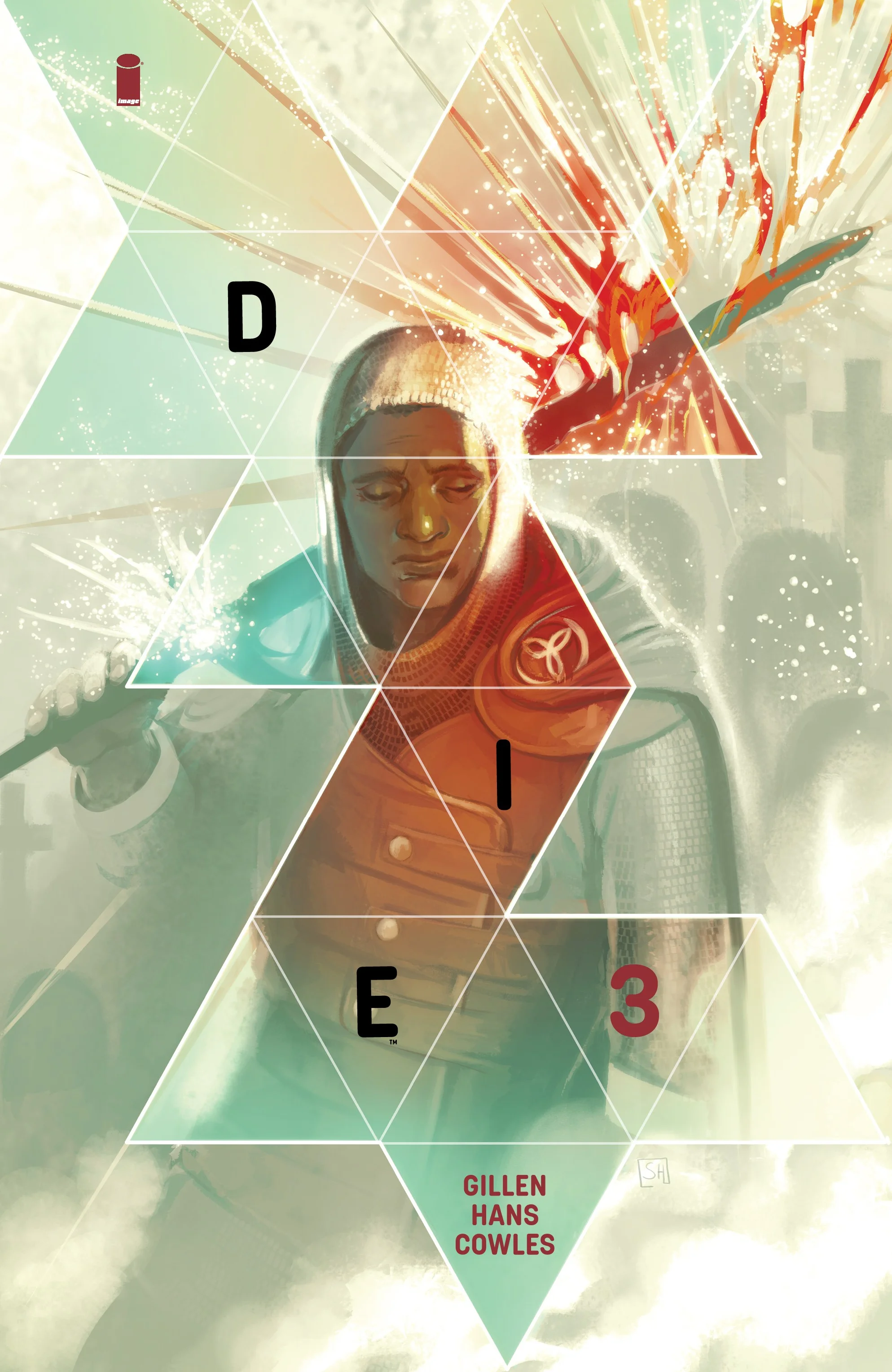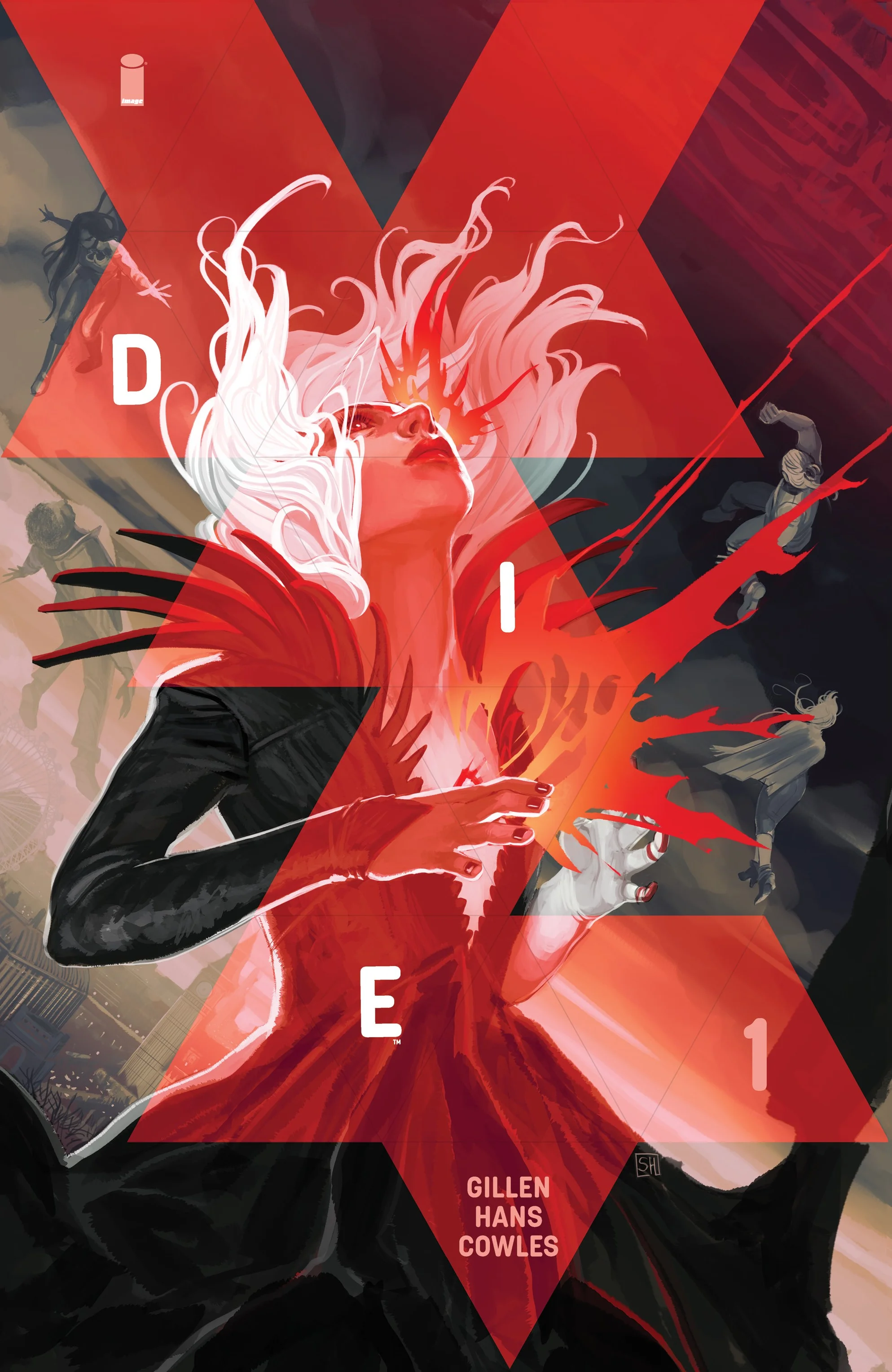Die #3 // Review
All good fantasy worlds take the time to do some world building. With writers like Tolkien, that world building is scattered throughout the book in massive chapters and appendices. Douglas Adams chose to intersperse it with asides and excerpts from various works in-universe. In the case of Die, the crew has decided to take an entire chapter aside in order to do some hard world-building and focus on one character. The results are actually quite pleasant, to boot.
Kieron Gillen is the writer of our tale, Stephanie Hans provides the art, and Clayton Cowles puts words on the page.
The story begins in the middle of an encounter with a dragon. Rather than being scale and flesh, this is a Prussian Steel Dragon. The encounter goes poorly, leaving the Dominator-class Dominic Ash separated away from the group, and stuck in the middle of a fantasy World War I hell. As Ash tries to survive until she can reunite with his friends, the reader gets to know a bit more about this part of the world.
This book continues to be nothing short of wonderful. While Die is obviously a collaborative effort at this point, Kieron Gillen is on-point with the words. Taking some of the more tragic aspects of the first World War, such as trench warfare and mustard gas, and combining it with angles of fantasy like dragons and halflings seems obvious in some respects. After all, authors of fantasy may take real life events or tragedies and re-work them into an unreal aspect to express lessons learned with less horror than life imparted. Stripping away the veneer of the fantasy while keeping the races intact results in one of the more disturbing aspects of Die: horror and fantasy blended into something out of nightmares. The narration does a great job expressing the chaos, while the dialogue feels about as natural as can be despite coming from a Hobbit stuck in a World War I trench.
The art is also utterly gorgeous. Stephanie Hans has done a fantastic job rendering the horrors of war into the printed page, without straying outside the lines of what could be considered a PG-13 printed page. It all lies in the facial expressions and body language, with the Halflings featuring hope and sorrow all at once despite their situation, and Ash’s reluctance to embrace this horrible world once more is evident even without the dialogue. Colors bleed off the page while still keeping the drab depression of war, and the original creations here just pop like nothing else. A dragon made out of steel and cogs, standing in for a tank? It’s actually quite awesome. This book is a work of art, and it’s utterly amazing to read.
While Die may have taken a brief aside to explain how horrifying the world can be, it only serves to act as character development for two of our main characters and draw the reader further inside the book’s world. If Die is a hundred issues, or only five, issues like this make the book worth at least checking out for anyone who’s a fantasy fan.







